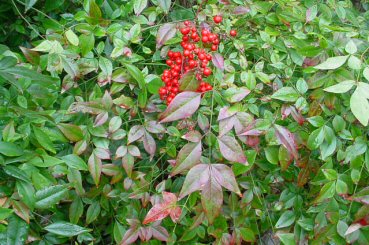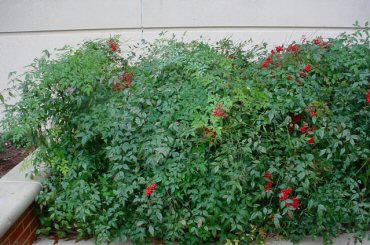Nandina 'Sacred Bamboo'
Scientific: Nandina Domestica Despite the common name, it is not a bamboo but an erect evergreen shrub up to 2 m (7 ft) tall by 1.5 m (5 ft) wide, with numerous, usually unbranched stems growing from ground level. The glossy leaves are sometimes deciduous in colder areas, 50–100 cm (20–39 in) long, bi- to tripinnately compound, with the individual leaflets 4–11 cm (2–4 in) long and 1.5–3 cm broad. The young leaves in spring are brightly colored pink to red before turning green; old leaves turn red or purple again before falling. The flowers are white, borne in early summer in conical clusters held well above the foliage. The fruit is a bright red berry 5–10 mm diameter, ripening in late autumn and often persisting through the winter. Flowering occurs from May to July. Flowers are in terminal, or sometimes axillary, panicles 8 to 15 inches long with several hundred perfect Flowers. Flowers are ¼ to ½ inches across and pinkish in bud, maturing to white with yellow anthers. Flowers are fragrant. Petals are variable in number ranging from 2 to 6. |
 |
 |
|

